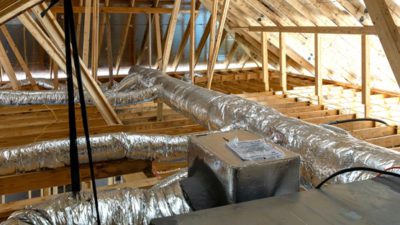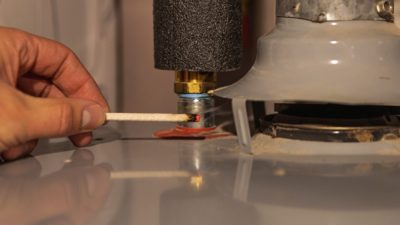Did you know that vehicles powered by diesel fuel are responsible for approximately 26% of the greenhouse gas (GHG) emissions in the U.S. transportation sector and 9% of total GHG emissions?
This statistic includes the vehicles that transport our kids to and from school every day. According to the Environmental Protection Agency (EPA), school buses provide safe transportation for more than 25 million kids in the U.S. daily, traveling about 4 billion miles annually.
School buses are built to be safe, and according to the National Highway Traffic Safety Administration (NHTSA), “students are about 70 times more likely to get to school safely when taking a bus instead of traveling by car.”
While their list of safety features is impressive, emissions from diesel-fueled school buses harm human health and the environment.
Approximately 95% of the school buses operating in the U.S. use diesel fuel which comes out to about $475,000 buses releasing harmful emissions into the environment.
Diesel Fuel Emissions & Health
Pollution from diesel fuel use (such as soot, nitrogen oxides, and particulate matter) can cause health problems like “asthma, respiratory infections, cognitive impairment, and premature death,” according to the Electrification Coalition. Children, drivers, parents/guardians waiting at the bus stop, and others who live along bus routes are susceptible to the toxic fumes.
The American Council for an Energy-Efficient Economy (ACEEE) says that “pollution from diesel fuel use can hurt the lungs, heart, brain, and other major body systems, leading to increased risk of asthma and breathing problems, heart issues, stroke, reproductive health complications, cancer, and more.”
Children’s bodies are still developing, making them even more vulnerable to the emissions from the very vehicle that many take to school.
Children & Toxic Fumes
According to the World Health Organization (WHO), “every day around 93% of the world’s children under the age of 15 years breathe air that is so polluted it puts their health and development at serious risk.” It is estimated that in 2016, 600,000 kids died from respiratory infections caused by air pollution.
While children are exposed to diesel emissions when they get on and off the bus, diesel emissions have also been found inside school buses, according to the Natural Resources Defense Council (NRDC). The NRDC says that
“children who ride a diesel school bus may be exposed to up to four times more toxic diesel exhaust than someone traveling in a car directly in front of it. The excess exhaust levels on the buses were more than eight times the average levels found in the ambient air in California and 23 to 46 times higher than levels considered to be a significant cancer risk according to the U.S Environmental Protection Agency (EPA) and federal guidelines.”
Electric School Buses
The concern about diesel-fueled school buses has contributed to an increase in electric buses on the streets. Three examples of states working to transition their fleets to electric are Michigan, New York, and Massachusetts.
Michigan
Zeeland Public Schools was one of seven Michigan school districts to receive a grant from the Michigan Department of Environment, Great Lakes, and Energy (EGLE) to support the purchase of 17 electric school buses.
So far, the Zeeland Public Schools District has incorporated 4 electric school buses into its fleet of 52, serving 4 different routes. The bus drivers are learning the tricks of the trade like generating electricity for the bus by taking their foot off the accelerator as they are slowly coasting up to a stop sign, for example. (See more in this video.)
New York
Last year, former Mayor Bill de Blasio announced that all school buses in New York City will be electric by 2035 in an effort to reduce air pollution produced by vehicles in the city. The city plans to add 75 electric school buses over the next couple of years.
According to the city, the transition from diesel to electric school buses will result in
- a 30% decrease of carbon emissions from school buses
- the removal of enough air pollution to avoid 2 premature deaths every year
- a reduction of asthma ER visits and respiratory and cardiac hospitalizations
- savings of approximately $18 million in health care costs
This commitment is an addition to an order that all 30,000 non-emergency city vehicles be electric by 2040.
Massachusetts
Transportation is the second-highest source of emissions in Boston and the first source of emissions in Massachusetts.
The city of Boston is on a mission to transition its fleet of more than 700 school buses to electric by 2030, starting with 20 buses in the 2022-23 school year. According to Mayor Michelle Wu’s office, Boston Public Schools deploys 739 buses currently, representing 11% of Boston’s emissions.
About 20 miles northeast of Boston, in Beverly, Massachusetts, an electric school bus delivered power back to the grid for 50+ hours over the 2021 summer. It was the first time that National Grid used an electric school bus to help meet peak energy demand. It was also one of the first times in the country that an electric school bus supported the grid through vehicle-to-grid technology.
In 2019, electric school buses represented less than 1% of school bus production nationally but that number continues to increase. Cities, states, and school districts all over the country are recognizing the benefits of transitioning to all-electric school buses like improved air quality with zero tailpipe emissions and savings stemming from lower operating and maintenance costs.
For the planet, and for the health of our neighbors, we are excited to watch electric school buses fill the streets, transporting our kids even more safely to school.
Looking for ways to decrease energy costs and reduce emissions from home? Sign up for a Home Energy Assessment at no-cost with HomeWorks Energy here or call (781) 305-3319 to schedule over the phone. A Home Energy Specialist will teach you how to save energy and money and because we’re a Mass Save® partner, we can help you access benefits like 100% air sealing and 75%+ off insulation, plus give you no-cost items like programmable thermostats and energy-efficient shower heads.
Together, we can make Massachusetts greener and our air cleaner!
Sources:
American Council for an Energy-Efficient Economy
Environmental Protection Agency





